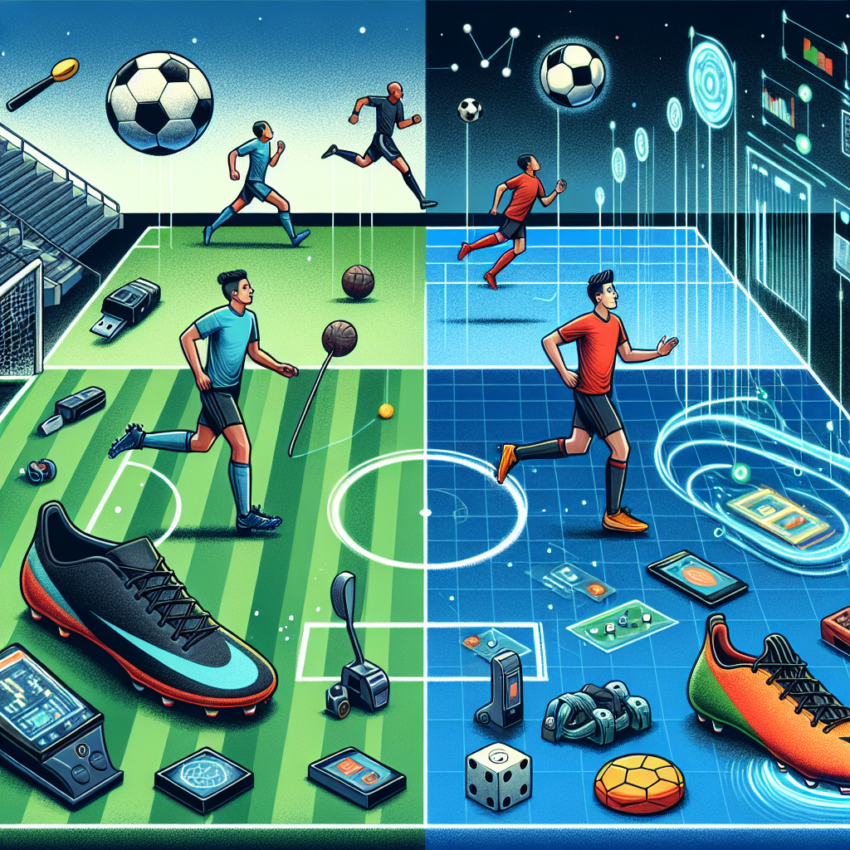Introduction
The world of sports has seen remarkable advancements over the last few decades, primarily driven by technological innovations. From improving athlete performance to enhancing viewer experience, technology has significantly reshaped the sports industry. This article delves into the profound impact of technology on various facets of sports.
Technology in Athlete Training
Wearable Technology
One of the most prominent advancements is the use of wearable technology in athlete training. Devices like smartwatches, fitness trackers, and heart rate monitors allow athletes and coaches to gather real-time data on various performance metrics.
- Performance Analysis: Wearables provide insights into speed, distance, and heart rate, helping optimize training routines.
- Injury Prevention: Tracking biomechanics and physical stress can help predict and prevent injuries.
Virtual and Augmented Reality
Virtual Reality (VR) and Augmented Reality (AR) have revolutionized training methods, providing immersive training environments.
- Simulated Practice: VR allows athletes to simulate game scenarios, improving their decision-making skills.
- Enhanced Training: AR overlays digital information onto the physical world, providing real-time feedback.
Improving Performance
Biomechanics and Motion Analysis
Advanced motion capture systems and biomechanical analysis tools offer detailed insights into an athlete’s movements.
- Enhanced Techniques: Analyzing an athlete’s form and technique helps in making necessary adjustments for better performance.
- Data-Driven Decisions: Coaches and athletes can make informed decisions based on the captured data, leading to improved performance.
Nutrition and Health Monitoring
Technological advancements have made it easier to monitor and enhance an athlete’s nutrition and overall health.
- Customized Diets: Nutritional software can create personalized diet plans based on an athlete’s specific needs.
- Health Metrics: Regular monitoring of vital health metrics ensures peak physical condition and recovery.
Fan Engagement
Live Streaming and Social Media
The way fans consume sports content has drastically changed with the advent of live streaming and social media platforms.
- Global Access: Fans can watch live games from anywhere in the world through streaming services.
- Interaction: Social media allows fans to engage with their favorite athletes and teams, creating a more interactive experience.
Augmented and Virtual Reality Experiences
AR and VR have also enhanced the fan viewing experience.
- Immersive Viewing: VR provides a 360-degree view of the game, making fans feel part of the action.
- Enhanced Engagement: AR offers interactive features like player stats and instant replays, enriching the viewing experience.
Broadcasting and Media
High-Definition and 4K Broadcasting
The quality of sports broadcasting has improved significantly with High-Definition (HD) and 4K technology.
- Crisp Visuals: Fans enjoy a more detailed and vibrant viewing experience.
- Slow-Motion Replays: High-definition cameras capture every moment in great detail, enhancing the analysis of critical moments.
Data Analytics and AI
Artificial Intelligence (AI) and data analytics are becoming increasingly important in sports broadcasting.
- Predictive Analysis: AI can predict game outcomes, fan engagement, and more, offering valuable insights.
- Customized Content: Data analytics help in creating personalized viewing experiences for fans by recommending content based on their preferences.
Arena and Facility Management
Smart Stadiums
Technological advancements have given rise to smart stadiums, enhancing the spectator experience and operational efficiency.
- Seamless Connectivity: Wi-Fi and mobile connectivity allow fans to share their experiences in real time.
- Enhanced Security: Advanced surveillance and facial recognition ensure a safe environment for spectators.
Energy Efficiency
Modern stadiums are increasingly adopting sustainable technologies to minimize their environmental impact.
- Solar Panels: Use of solar energy to power stadium operations.
- Smart Lighting: LED lighting systems controlled by AI to reduce energy consumption.
Conclusion
Technology has undeniably transformed the sports industry in multifaceted ways. From improving athlete performance and training methods to enhancing fan engagement and stadium management, the impact is profound. As technology continues to evolve, its role in sports will undoubtedly grow, further revolutionizing how we play, watch, and experience sports.

